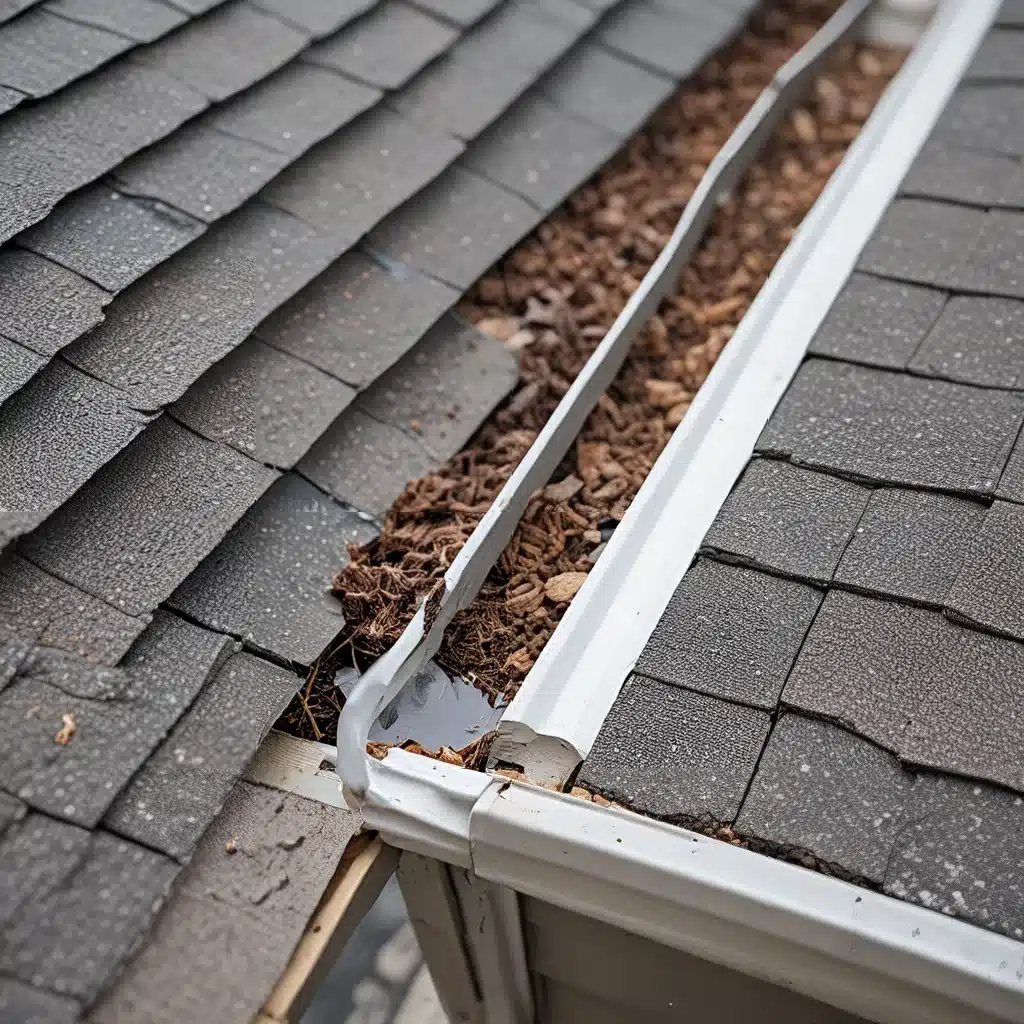
As a homeowner, I know all too well the importance of a reliable gutter system. Those often-overlooked troughs running along the roofline play a crucial role in protecting our homes from the ravages of water damage. But what happens when those trusty gutters just can’t handle the job anymore? Well, my friend, that’s where gutter upgrades come into play!
The Perils of Gutter Overflow
I’ll never forget the time a heavy rainstorm hit my neighborhood a few years back. The skies opened up, and the downpour was relentless. As I watched from the safety of my living room, I noticed something troubling – my gutters were overflowing, sending a torrent of water cascading down the side of my house. Gutter overflow is a common issue that many homeowners face, often due to inadequate gutter size or poor maintenance.
The consequences of this overflow were swift and dire. The water seeped into my foundation, causing cracks and weakening the structural integrity of my home. It also did a number on my landscaping, eroding the soil and leaving unsightly puddles around the property. And to top it all off, the water even made its way into my basement, leading to a nasty mold and mildew problem that put my family’s health at risk. Yikes!
Tackling the Problem with Gutter Upgrades
After that harrowing experience, I knew I needed to take action. That’s when I learned about the benefits of upgrading to larger gutters. These beefier troughs can handle a greater volume of water, significantly reducing the likelihood of overflow during heavy rainfall. With larger gutters, I can rest easy knowing my home is better equipped to weather even the most intense storms.
But the advantages of gutter upgrades don’t stop there. Larger gutters require less maintenance because they’re less prone to clogs and debris buildup. That means I can spend less time with my hands in the muck, cleaning out leaves and twigs, and more time enjoying the great outdoors (or, let’s be real, binge-watching the latest Netflix sensation).
And here’s a little bonus – upgrading to larger gutters can actually increase the value and appeal of my home. Homebuyers these days are on the lookout for properties that are well-protected against common issues like water damage, and a robust gutter system is a major selling point. Plus, modern gutter systems come in a range of stylish colors and designs that can complement the overall aesthetic of my home. It’s a win-win!
Choosing the Right Gutter Upgrade
Of course, not all gutter upgrades are created equal. When it comes to selecting the perfect system for my home, I have to consider a few key factors. First and foremost, I need to ensure the new gutters can handle the size and pitch of my roof. A larger roof or one with a steep angle will require a more substantial gutter system to manage the increased water flow.
I also have to think about the local rainfall patterns in my area. Homes in regions with heavy downpours need a more robust gutter system than those in drier climates. And let’s not forget about the architectural style of my home – the new gutters need to not only be functional but also aesthetically pleasing, blending seamlessly with the overall design.
When it comes to gutter materials, I have a few options to choose from. Aluminum gutters are a popular choice for their lightweight construction, rust-resistance, and wide range of color options. Steel gutters are more durable but can be susceptible to corrosion over time. Vinyl gutters are an affordable and easy-to-install option, but they may not hold up as well in extreme temperatures.
As for the gutter shape, K-style gutters are a common choice due to their high capacity and resistance to clogging, while half-round gutters offer a more traditional look and are generally easier to clean. But of course, the specific needs of my home will ultimately dictate the best shape and size for the job.
Ensuring a Successful Gutter Upgrade
Once I’ve chosen the perfect gutter system, the real work begins. Accurate measurements are key to a successful installation, so I’ll need to carefully assess the edges of my roof and plan the layout of the downspouts to ensure efficient water flow. And speaking of downspouts, the number I’ll need will depend on the length of my gutters, with one downspout required for every 20 to 30 feet of gutter.
But the installation process doesn’t stop there. Proper sloping of the gutters, with a slight incline towards the downspouts, is crucial to prevent water pooling. And securing the gutters firmly with hangers spaced no more than 24 inches apart (or closer in areas with heavy snowfall) will help prevent sagging and detachment.
Installing gutter guards is another smart move, as they help keep debris from clogging the system and reducing maintenance needs. And of course, I’ll need to make sure I’m following all local building codes to avoid any pesky fines or the need to redo the entire project.
Embracing the Upgrade
Upgrading my gutter system may seem like a daunting task, but the benefits far outweigh the initial hassle. With enhanced water management, reduced maintenance, and the potential for increased home value, this investment is a no-brainer. Plus, with the help of experienced professionals, the process can be seamless and stress-free.
So, if you’re like me and have dealt with the headaches of gutter overflow, it might be time to consider an upgrade. Who knows, you might even find yourself humming a little tune as you watch the rain cascade perfectly away from your home, safe and sound. After all, there’s nothing quite like the peace of mind that comes with knowing your home is well-protected from the elements.